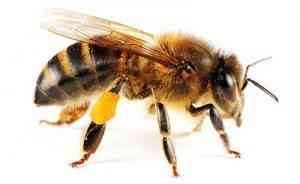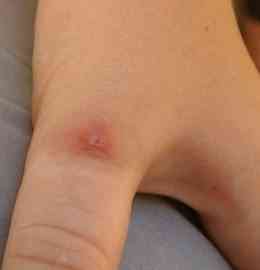How To Treat Common Bug Bites With Basic First Aid
 Bug bites are an inevitable part of life. No matter where you live, you will experience a variety of different bug bites throughout your lifetime, and being a dirt bike rider, you will be more exposed to bugs than with other activities.
Bug bites are an inevitable part of life. No matter where you live, you will experience a variety of different bug bites throughout your lifetime, and being a dirt bike rider, you will be more exposed to bugs than with other activities.
It’s important to know that not all bug bites are created equal, and that your own body will determine how you react to a particular bite. Some bites are hardly worth noticing, while others can require immediate medical attention. You must be able to distinguish the different types of bug bites and to know your reactions, as well as those in your riding group, to every kind of bug bite.
In this article, we’re going to cover the most common types of bug bites you’re likely to encounter in the united states, along with the possible symptoms and first aid treatments for each.
**Before you read any further, please use common sense, if your symptoms increase in severity seek medical attention immediately!**
Types of Common Bug Bites You’re Likely To Encounter

Ant Bites
Falling is part of riding, where you fall is hard to control, and most ant hills are hard to spot on the trails. Ants inject venom into your body via their mandibles. They can inject venom multiple times. Fire ants are the most common ants in this category.
Ant Bite Symptoms
- A cluster of red spots that develop small blisters on top
- Slight burning and itching sensation that can last up to a week.
How To Treat An Ant Bite
- Wash affected area with soap and water
- Apply ice or another cooling agent to reduce pain
- Wrap in a bandage
- Apply topical ointment, if available
 Bee and Wasp Stings
Bee and Wasp Stings
When a bee stings their target, they lose their stinger and eventually die. On some occasions, the stinger will remain inside the target’s skin and continue to release venom.
Unlike with bees, wasps can (and will) sting their target multiple times, as their stinger does not break off, because wasps represent everything wrong in the world.
Bee Sting Symptoms
- Instant and intense pain at sight of the sting.
- Swelling around the sting area
- Small spot (white or red) where the stinger punctured the skin.
How To Treat A Bee Sting
- Remove the stinger (if needed). Removing the stinger can be done with a set of tweezers.
- Place ice on the sting site to reduce swelling.
- Take an OTC pain pill to help reduce pain.
** If a swarm of bees attacks you, seek medical attention immediately!**
Identifying Mosquito Bites
Mosquito bites generally are not dangerous. However, mosquitoes are notorious for carrying and transmitting diseases. Fortunately these days most diseases carried by mosquitos have either been eradicated or have a vaccine.
Mosquito Bite Symptoms
- Raised area around the site of the bite
- Instant, mild pain at the site of a bite
- Itching at sight of the bite
How To Treat a Mosquito Bite
- Place ice on the bite site to reduce swelling.
- Apply topical cream to relieve itchiness.
** Keep the condition of the person bitten by a mosquito under surveillance for the next few days. Like I stated earlier, mosquitoes are known for transmitting diseases. If the person experiences any irregular symptoms (fever, vomiting, dizziness, etc.), contact the local medical center immediately.

What Do Spider Bites Look Like
While there are several different species of spiders in North America, only two are considered dangerous – the Brown Recluse and the Black Widow. Bites from these two spiders can prove deadly to any person.
Spider Bite Symptoms
Black Widow
- Instant sharp pain from the bite
- Ring of redness with a pale circular area at the bite site
- Abdominal pain
- High blood pressure

Brown Recluse
- Pain and swelling at and around the bite site.
- Blisters forming around the bite site
- Fever, chills, nausea, and vomiting may also occur
How To Treat A Spider Bite
If you suspect that the bite is from a Brown Recluse or a Black Widow, seek medical attention immediately.
If it’s not a Black Widow or Brown Recluse, then do the following:
- Wash the bite site with soap and water
- Apply topical cream to reduce the itch
- Take Tylenol to reduce pain
Ticks Bites & Attachment
Ticks latch onto your skin and feast on your blood. Like mosquitoes, they can carry a variety of diseases, most notably, ticks carry Lyme disease. If left unattended, they can partially bury themselves in your skin.
Tick Bite Symptoms
- The most obvious “symptom” of a tick bite is the presence of the tick. It’s usually easy to locate a tick on your body; however, if it decides to set up shop in your hair, you may have to rely on other symptoms.
- Soreness and mild pain around the affected area
- Flu-like symptoms (fever, aching, and nausea); especially if the tick is carrying a disease
How To Treat A Tick Bite
Most tick bites are entirely harmless and can be taken care of at home.
- Remove the tick
- Use a pair of tweezers and grab the tick as close to its mouth as possible (the part that is just above the skin), and then pull it straight up until it lets go
- Wash the infected area with warm water and soap
- Watch for signs of infection or disease over the next couple of weeks
Important Note on Allergic Reactions to Common Bug Bites
People can have severe allergic reactions to all of the common bug bites listed above. These reactions can occur at any time, even if an allergic condition did not exist in the past. Therefore, you must know the common symptoms of a severe allergic reaction so that you can take the proper measures, if necessary.
Symptoms That Can Occur With All But Bites
- Drastic skin reactions (hives, rashes, paleness of skin)
- Shortness of breath
- Nausea and vomiting (or, dry-heaving)
- Dizziness and fainting
- A weak pulse
Call 911 immediately and follow the recommended treatment procedures for the corresponding bug bites.
If you have any questions or anything to add, please leave them in the comments or on our FaceBook page!
Keep Reading – What to Do About A Black Eye




